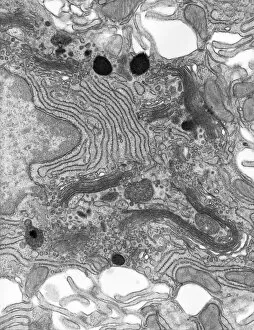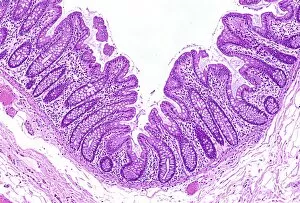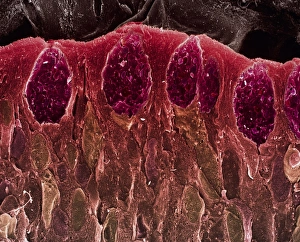Enterocyte Collection
Enterocytes are the star players of our digestive system, responsible for absorbing nutrients from the food we consume
All Professionally Made to Order for Quick Shipping
Enterocytes are the star players of our digestive system, responsible for absorbing nutrients from the food we consume. These remarkable cells can be seen under a high-powered microscope, such as TEM (Transmission Electron Microscope), revealing their intricate structures and functions. In the large intestine, light micrographs C016 / 0522 and C016 / 0516 showcase enterocytes in action. These images capture the colon's vibrant ecosystem where these cells work tirelessly to extract water and electrolytes from waste material before it is eliminated from our bodies. Moving further along the digestive tract, we explore the small bowel epithelium through TEM imaging. Here, enterocytes line up like soldiers on intestinal villi – finger-like projections that increase surface area for nutrient absorption. Light micrographs and SEM (Scanning Electron Microscope) images of small intestine villi provide breathtaking views of this vital process. The microscopic world reveals fascinating details about enterocytes' structure: delicate microvilli cover their surfaces like tiny bristles, enhancing nutrient absorption efficiency. An artwork beautifully illustrates these minute structures known as microvilli. However, not all is perfect within our intestines. SEM images show us instances of intestinal villus cell loss or damage caused by various factors such as inflammation or disease. These visuals serve as reminders of how crucial it is to maintain a healthy gut environment to support optimal enterocyte function. Enterocytes may be hidden heroes within us but understanding their role in digestion helps us appreciate their significance in keeping our bodies nourished and functioning properly.









